Despite progress, the finance function’s top echelons remain male-dominated. In 2022, only 13% of CFOs were female and women held just a third of management roles in finance, with the numbers thinning even more at the highest levels. These statistics highlight a persistent gap that’s difficult to ignore.
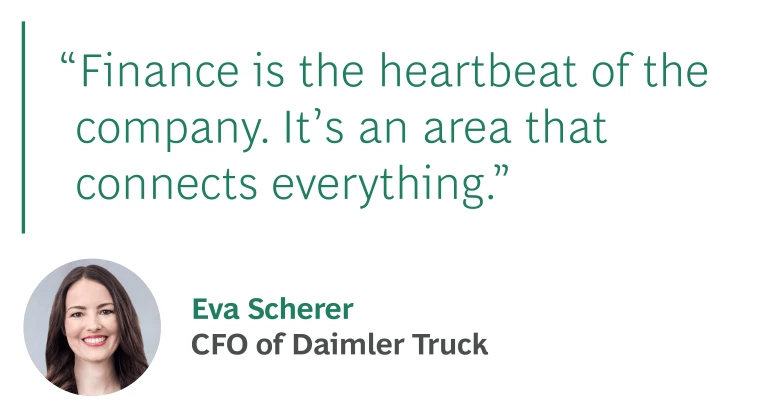
Companies that master inclusion not only have an edge in attracting top talent, they also see a positive boost in employee motivation, productivity, and retention. Yet barriers such as unconscious bias and entrenched workplace cultures continue to leave talent untapped.
We set out to learn from the women who’ve made it to the top despite these challenges. Over the past year, we spoke with nearly a dozen women CFOs to capture their insights, strategies, and advice. Their stories reveal valuable lessons for aspiring female leaders—and for companies eager to build a more inclusive, high-performing workforce.
Thriving at the Top
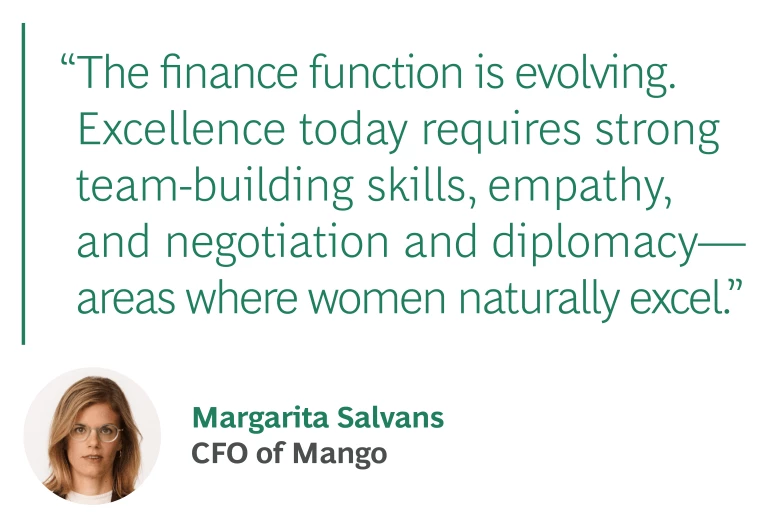
The women who have reached the pinnacle in finance share a common passion: they love their work. Every conversation revealed their passion for the challenges, complexity, and impact they wield in steering their companies. These are women who have “made it” in conventional terms—widely respected, well compensated, and influential. Most are at a point where they could retire or pursue other interests, yet they choose to stay because they find deep satisfaction in their roles. As Eva Scherer, CFO of Daimler Truck, puts it, “Finance is the heartbeat of the company. It’s an area that connects everything.”
Their companies benefit, too. Inclusive organizations see increased employee performance, engagement, and retention—slashing attrition by as much as 50%.
As business demands grow, women’s leadership in finance could have an even more powerful impact. Margarita Salvans, CFO of Mango, says, “The finance function is evolving. Excellence today requires strong team-building skills, empathy, and negotiation and diplomacy—areas where women naturally excel.”
Advice from Women CFOs to Younger Professionals
Many organizations have programs to develop rising talent. But sometimes, these efforts can be too glancing—periodic town hall sessions, for example, are unlikely to effect meaningful change. And other programs can feel too broad-brush. Women, particularly those in finance, are not a monolith.
We asked leading women CFOs what advice they would like to share with the next generation of female talent:
- Dive in, even if you’re not ready. Study after study shows that women wait until they feel 100% confident that they have the requisite skills before putting themselves forward for a new position. The women CFOs we spoke to urge younger aspirants to shake that mindset. Some of their biggest and most satisfying career steps occurred when they were placed in positions that they felt were too big a jump. Louise Öfverström, CFO of Nemetschek, tells us, “When I was young and placed in a role that I felt wholly unequipped for, I remember saying, ‘I don’t know if I can do that at all.’ My boss just looked at me and said, ‘Oh, these are big shoes, but your feet will grow in. I support you in that.’ And it made all the difference. Now, I try to make a strong case to younger women for not going the easiest way.”
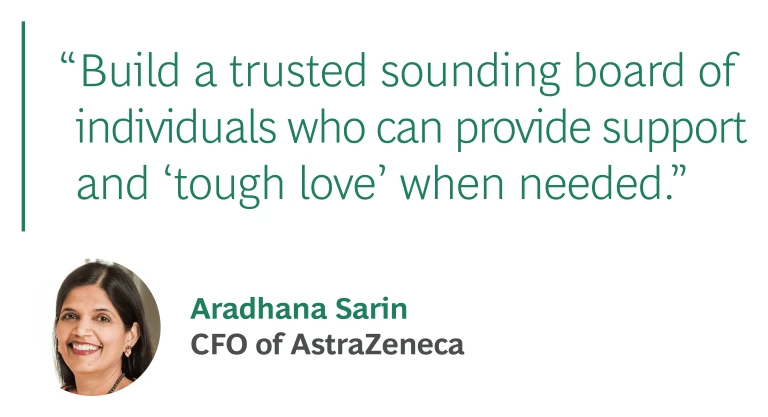
- Forget thick skin—get a Teflon mindset. All up-and-coming leaders encounter setbacks. A decision may not work out as planned, an action may rub someone the wrong way, a presentation may not be the home run that was intended. Such events are part of the fabric of anyone’s career. Top leaders learn from these experiences but leave the scars behind. Several of the CFOs we spoke with point out that men tend to be quicker to put negative incidents behind them, while women often brood and worry. It’s better to “be like a goldfish,” says one. “‘Forget’ and move on.” Cultivating that mindset may take time, but it’s crucial that women take calculated risks to support their business and advance their finance careers.
- Build your personal brand and personal board of advisors. Setting a bold aspiration contributes to the deep satisfaction and enjoyment many women gain from their careers. When Salvans moved to Mango, she comments, “It was like a double flip jump because I changed sector, and I changed the position and function I worked in. It felt like a crazy risk, but it worked out really well.” AstraZeneca’s CFO, Aradhana Sarin, tells women to “look ahead two to three years and prepare for your future version.” After they have charted where they want to go, she advises, they should “build a trusted sounding board of individuals who can provide support and ‘tough love’ when needed.”
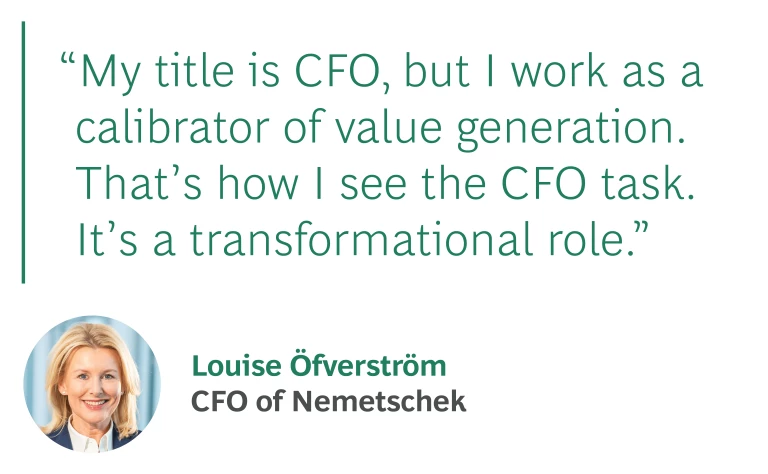
- Go beyond the ledger and get “street smart.” While technical skills are essential, broader business acumen is invaluable. Öfverström says, “My title is CFO, but I work as a calibrator of value generation. That’s how I see the CFO task. It’s a transformational role.” That eye on value creation is key, and many we talked with highlight that capital markets or hands-on P&L management can be especially useful. Serving as an equity analyst, for example, helped Sandrine Dufour of UCB approach her CFO role in a more strategic way. She comments, “I always look at things from the top and over the long term. That allows me to make finance as clear as possible for all stakeholders—whether it’s the finance team or other stakeholders—so that everyone feels they can have an impact.”
Organizations Must Also Evolve
The women we spoke to are clear that diversity goes beyond gender. They stress the importance of grooming leaders who reflect a variety of perspectives and backgrounds. That richness puts organizations in a better position to see opportunities and risks they might otherwise miss if they tap into only a narrow band of experience sets. While mentorship, network building, and flexible schedules are helpful, the CFOs we talked with recommend additional measures that organizations can take to truly empower women leaders and unleash a variety of perspectives at their leadership tables (for more details, click on the boxes below):
- Give underrepresented leaders a voice at the table, not just a seat. Assign leaders from diverse backgrounds to run high-stakes discussions and make strategic decisions, rather than just asking them to contribute. As Sinead Gorman, CFO of Shell, puts it, “A seat at the table is easy; a say is earned by structuring space where my perspective is necessary.” When members of underrepresented groups are active in decision making, it elevates the team’s effectiveness and drives better results.
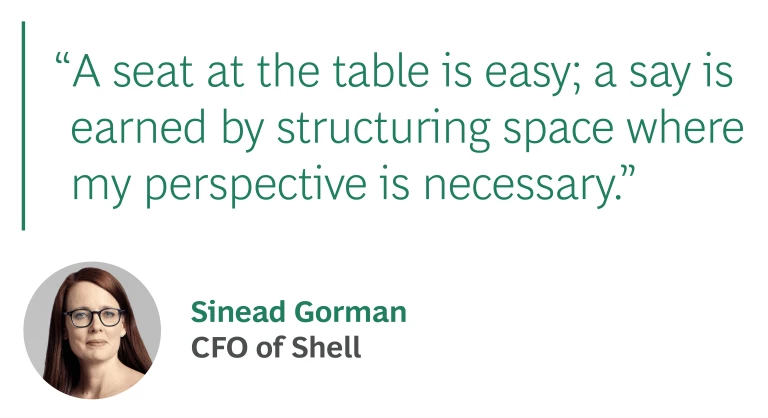
- Embrace active advocacy, not just mentorship. Many organizations encourage mentorship, but few prioritize sponsorship—where senior leaders actively advocate for the advancement of underrepresented talent. Sponsorship gives these younger employees a direct pathway to influential roles and opens doors that mentorship alone cannot. Öfverström says, “Career progression requires more than good advice. Actively placing people in stretch roles signals a belief in their potential and cultivates a stronger, more diverse pipeline of leaders.”
- Root out unconscious bias. In interviews and other assessments, individuals from underrepresented groups are routinely held to different standards, even if subtly. Gorman notes, “If a man and a woman are going for the same role, the interview commentary can often use different language and judging criteria.” In performance reviews, involving a “third eye” in the form of an additional manager can help mitigate the impact of unconscious bias. Similarly, consciously ensuring that “nine-box grids” and other performance rubrics reflect diverse talent is another way of limiting unconscious bias.
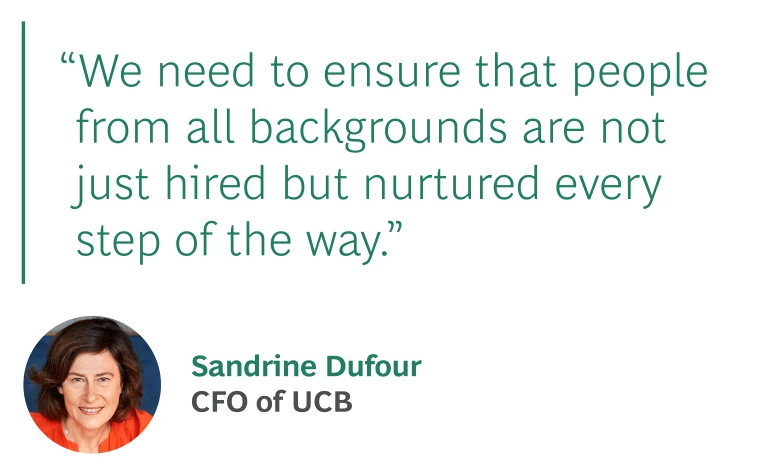
- Ask “who’s missing?” in every critical meeting and decision. Often, underrepresented voices are absent simply because they’re not in the room. Adopting a culture that routinely questions “who’s missing?” helps ensure diverse perspectives in every discussion. “Leaders who make a conscious effort to include people from diverse backgrounds make better, more innovative decisions,” Scherer notes. “We need to hire people who are different from us, not only in terms of gender, but also in terms of nationality, culture, education, and so on. They challenge us and push us to become better versions of ourselves.”
- Make sure the pipeline is healthy by nurturing early and mid-career women. Leaders at the top know that they didn’t reach their roles alone—many had help early on. Focused development of early and mid-career talent through targeted programs, high-visibility projects, and leadership training is essential. Dufour comments, “It’s a long game; we need to ensure that people from all backgrounds are not just hired but nurtured every step of the way.” When organizations focus on cultivating talent from the ground up, they develop a sustainable leadership pipeline that strengthens the company’s long-term resilience and success. Building robust networks that connect underrepresented groups with opportunities is crucial. At AstraZeneca, Sarin has pushed to create a global network, saying, “People may not hear of opportunities if they are from smaller or more remote locations. So it’s really important to have a global network that can allow rising talent to grow.”
The journey for women in finance remains challenging but rewarding. The leaders we spoke to have shattered barriers by claiming a place in the room—as well as speaking up, taking risks, and embracing resilience. For organizations, the path forward is clear: support women not just by opening doors but by empowering them to lead from within. Companies that ensure fair treatment of all candidates, at entry and on the path to leadership, can effectively harness the full potential of diverse talent, fostering innovation and driving sustainable growth.













